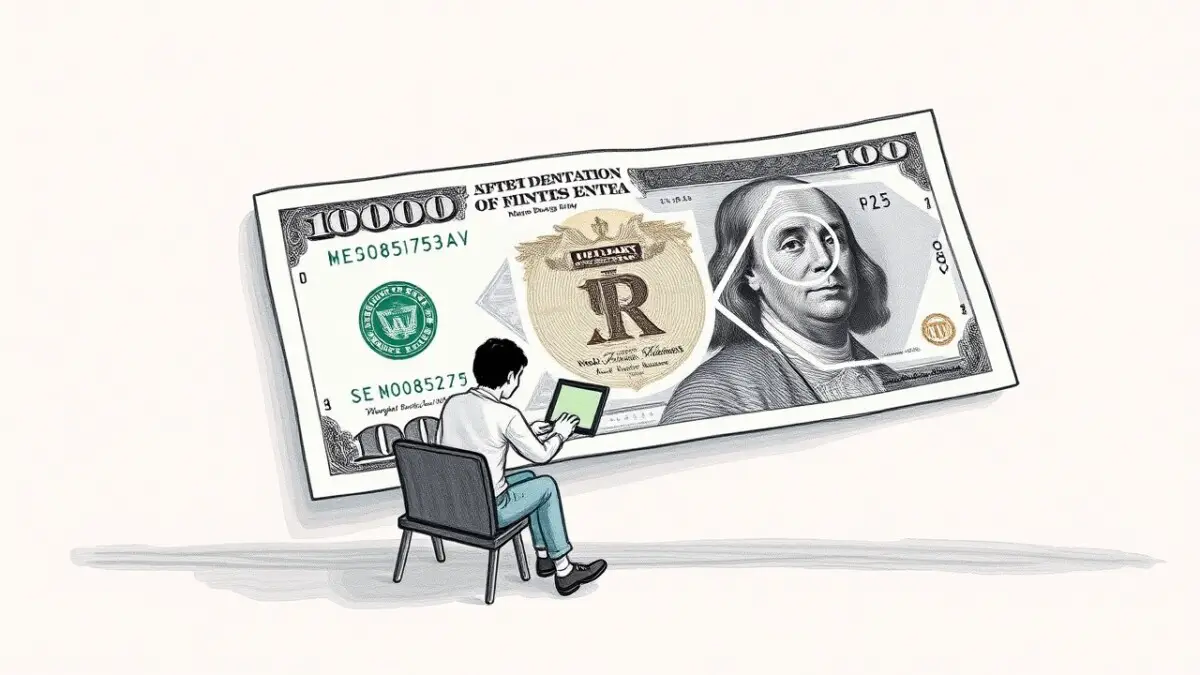How to Save Money, Saving money is often associated with the idea of cutting back on the things that bring us joy—replacing nights out with friends for quiet evenings at home or opting for cheaper, less enjoyable alternatives. But what if there’s a way to save without feeling deprived? The good news is, there is! With the right mindset and a few strategic changes, you can grow your savings while still indulging in the things you love.
It all comes down to making small, intentional shifts that don’t compromise your lifestyle. For example, you can learn how to budget effectively and prioritize spending on what truly matters to you. By evaluating your spending habits and identifying areas where you can cut back, such as subscriptions you rarely use or pricey impulse buys, you’ll free up more cash for things you genuinely enjoy.
Additionally, simple lifestyle tweaks like meal prepping, using public transport, or embracing second-hand shopping can add value without costing you more. With a bit of creativity and planning, saving money doesn’t have to mean sacrificing your happiness. This guide will show you how to make your money work for you—allowing you to live the life you love while still building a more secure financial future.

1. Audit Your Current Spending Habits
Before diving into specific strategies, start by understanding where your money is going. Conduct a thorough review of your expenses over the past three months. Categorize your spending into needs (e.g., rent, utilities, groceries) and wants (e.g., dining out, subscriptions, shopping).
Action Steps:
- Use Budgeting Apps: Tools like Mint, YNAB (You Need A Budget), or PocketGuard make it easy to track spending patterns.
- Analyze Trends: Identify areas where you might be overspending, such as frequent coffee runs or impulse purchases.
- Set Priorities: Decide which expenses are essential and which can be reduced or eliminated.

2. Maximize Discounts and Cashback Opportunities
One of the easiest ways to save money without altering your lifestyle is by taking advantage of discounts and cashback programs. Whether you’re shopping for groceries, clothing, or dining out, there are countless opportunities to save.
Action Steps:
- Loyalty Programs: Sign up for rewards programs at your favorite stores and restaurants.
- Cashback Apps: Use apps like Rakuten, Honey, or Ibotta to earn cashback on everyday purchases.
- Seasonal Sales: Plan big purchases around major sales events, such as Black Friday or end-of-season clearance sales.
- Price Comparison Tools: Use tools like Google Shopping or PriceGrabber to ensure you’re getting the best deal.

3. Cook More, Eat Out Less
Dining out is one of the biggest culprits of overspending. While enjoying a nice meal at a restaurant is a treat, you can significantly reduce your food expenses by cooking at home more often.
Action Steps:
- Meal Planning: Plan your meals for the week to avoid unnecessary grocery trips and food waste.
- Batch Cooking: Prepare large portions of meals and freeze leftovers for quick, budget-friendly options.
- Recreate Favorites: Learn to cook your favorite restaurant dishes at home. There are countless recipes online for almost any dish you crave.
- Smart Grocery Shopping: Shop with a list, look for sales, and consider buying in bulk for non-perishable items.
4. Cut Subscriptions You Don’t Use
Subscription services can quickly add up, especially if you’re paying for ones you rarely use. It’s time to assess which services add value to your life and which can go.
Action Steps:
- Audit Your Subscriptions: Check your credit card or bank statements for recurring charges.
- Prioritize: Keep subscriptions that you regularly use and cancel the rest. For instance, if you have multiple streaming services, consider keeping just one.
- Share Plans: Split costs with family or friends. Many streaming platforms offer multi-user plans that allow sharing.
How to Save Money

5. Embrace DIY Alternatives
Many expenses can be reduced or eliminated by doing things yourself. From home maintenance to personal care, there are countless opportunities to save.
Action Steps:
- DIY Projects: Tackle small home repairs, craft your own decorations, or upcycle old furniture.
- Beauty Treatments: Learn to do your own manicures, haircuts, or facials at home.
- Fitness: Swap costly gym memberships for at-home workouts or outdoor activities like jogging, biking, or hiking.
- Learning New Skills: Platforms like YouTube, Skillshare, and Coursera offer tutorials and courses that can save you money on services.
6. Leverage Technology for Savings
The digital age has ushered in a wealth of tools designed to help you save. By leveraging technology, you can find deals, automate savings, and stay on top of your financial goals.
Action Steps:
- Automate Savings: Set up automatic transfers to your savings account on payday.
- Coupon Apps: Use apps like RetailMeNot or Honey to find promo codes and discounts while shopping online.
- Price Alerts: Use tools like CamelCamelCamel for Amazon or Google Alerts to track price drops on items you want.
- Round-Up Savings Apps: Apps like Acorns automatically round up your purchases to the nearest dollar and invest the spare change.

7. Travel Smarter
Traveling doesn’t have to break the bank. With careful planning, you can enjoy adventures without overspending.
Action Steps:
- Book in Advance: Flights and accommodations are often cheaper when booked months ahead.
- Use Reward Points: Take advantage of credit card points or airline miles to offset costs.
- Stay Flexible: Traveling during off-peak times or midweek can save you money.
- Alternative Lodging: Consider options like Airbnb, hostels, or house sitting instead of traditional hotels.
- Pack Smart: Avoid baggage fees by packing light and sticking to carry-on luggage.
8. Practice Energy Efficiency
Reducing your utility bills doesn’t mean living in discomfort. Small changes can lead to big savings while keeping your home comfortable.
Action Steps:
- Upgrade Lighting: Replace traditional bulbs with energy-efficient LED ones.
- Smart Thermostats: Install a programmable thermostat to optimize heating and cooling.
- Unplug Devices: Save energy by unplugging devices when not in use.
- Seal Leaks: Use weather stripping and caulking to seal drafts around doors and windows.
- Wash Smart: Use cold water for laundry and run full loads in the dishwasher.

9. Shop Secondhand
Buying pre-loved items is an excellent way to save money without compromising quality. From clothing to furniture, secondhand shopping can lead to incredible finds.
Action Steps:
- Thrift Stores: Visit local thrift shops for unique and affordable items.
- Online Marketplaces: Explore platforms like eBay, Poshmark, or Facebook Marketplace for great deals.
- Garage Sales: Keep an eye out for neighborhood garage sales or estate sales.
- Swap Events: Host a swap party with friends to exchange clothing, books, or other items.
10. Negotiate Your Bills
Many bills are negotiable, and a simple phone call could save you hundreds of dollars annually.
Action Steps:
- Call Providers: Contact your internet, cable, or insurance providers to ask for discounts or promotions.
- Bundle Services: Combine services like internet, phone, and cable to save money.
- Shop Around: Compare prices and switch providers if you find a better deal.
- Use Scripts: There are plenty of negotiation scripts available online to guide you through the process.

11. Develop a Savings Mindset
Adopting a positive attitude toward saving can make the process more enjoyable and less of a chore. By reframing the way you view saving, you can turn it into an empowering habit rather than a restrictive one.
Action Steps:
- Set Goals: Define clear, achievable savings goals to stay motivated.
- Celebrate Milestones: Reward yourself when you reach savings milestones, such as taking a day off or buying a small treat.
- Visualize Success: Use tools like vision boards or financial apps to track your progress and stay inspired.
- Practice Gratitude: Focus on what you already have rather than what you’re giving up.
12. Invest in Quality Over Quantity
Spending more upfront on high-quality items can save you money in the long run by reducing the need for frequent replacements.
Action Steps:
- Research: Read reviews and choose durable, well-made products.
- Avoid Fast Fashion: Invest in timeless wardrobe staples rather than trendy, low-quality items.
- Buy Once, Cry Once: Apply this principle to electronics, appliances, and tools.
- Maintenance: Take good care of your belongings to extend their lifespan.

13. Participate in Free or Low-Cost Activities
Having fun doesn’t have to come with a hefty price tag. With a little creativity, you can find plenty of enjoyable activities that cost little to nothing.
Action Steps:
- Community Events: Check out free events in your area, such as concerts, festivals, or workshops.
- Outdoor Adventures: Explore local parks, trails, or beaches.
- Library Resources: Borrow books, movies, or even tools
14. Conclusion
Saving money doesn’t have to mean sacrificing the lifestyle you enjoy. By being strategic with your spending, you can build savings without feeling deprived. Start by identifying areas where you can cut back without impacting your quality of life, like switching to more affordable brands, cooking at home more often, or eliminating subscriptions you don’t use. Track your expenses to see where your money goes and create a budget that works for you. It’s also important to prioritize long-term savings goals, such as building an emergency fund or investing in retirement, so you can secure financial stability while still living life to the fullest.
Small adjustments can make a big difference over time, whether it’s taking advantage of discounts, planning your purchases, or finding alternative ways to enjoy your hobbies at a lower cost. Keep in mind that saving money is about consistency, not drastic changes. By adopting smart habits and being mindful of your spending, you can achieve your financial goals without feeling deprived of the things you love. Ultimately, living a financially healthy life is about balance—enjoying today while preparing for a secure tomorrow.







Leave a Reply